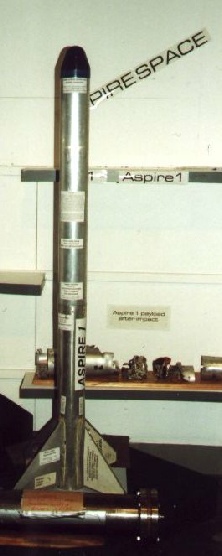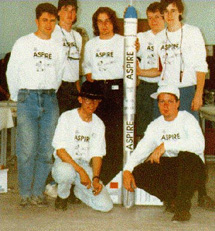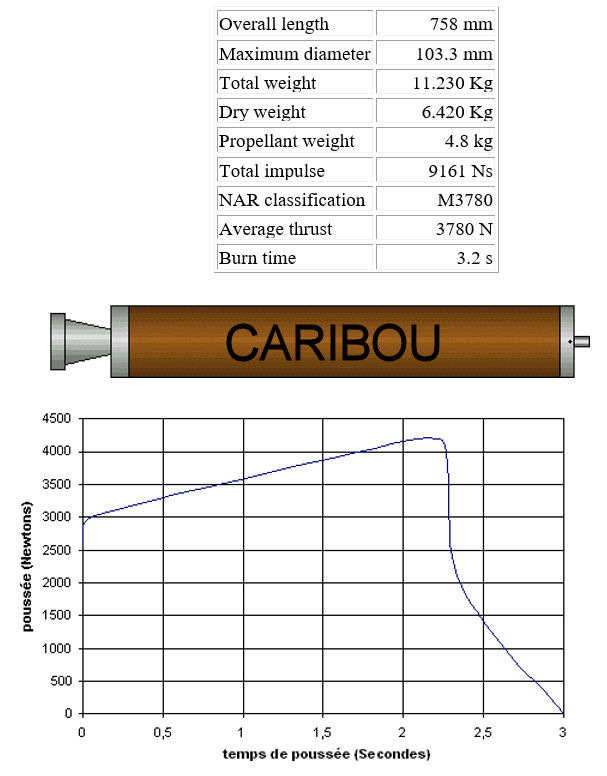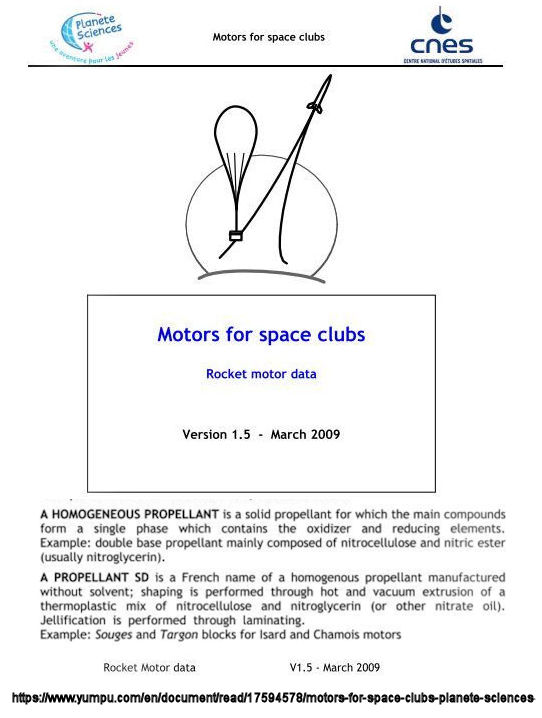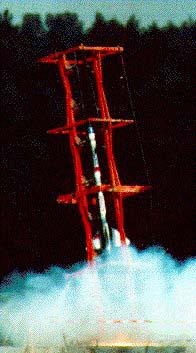

Aspirespace Rocket Engineering Society
Aspire 1
30 years ago, a team of UKSEDS students from various universities collaborated to design and build a Level 3 HPR rocket vehicle, called ‘Aspire’ (1).
It was launched on the 26th of July 1992 at the ANSTJ “Les Jeunes et L’ Espace” European student rocket launching campaign held at the Mourmelon-le-Grand army camp in the Champagne region of France.
Aspire 1 had an aluminium fuselage and fins, with a carbon-fibre nosecone. It measured approximately 2 metres in length, and had a launch mass of 21 Kg, a fair percentage of this comprising the French solid rocket motor powering it.
This motor was an M3780 ‘Caribou’; a particularly vicious solid motor powered by a French version of cordite - nitrocellulose and nitroglycerin. (The nearest modern equivalent is the Cesaroni 4-grain Pro98 9994M3400-P.)
Amongst European rocketeers, the Caribou was notorious: notwithstanding an over-heavy motor casing, due to a design flaw it produced a very short pulse of thrust during the first few milliseconds after ignition - of more than twice the average thrust. (This thrust spike was never shown on the official thrust curves - our team only learned of this at the French launchsite!)
Aspire 1 carried an avionics package consisting of a flight computer whose primary function was to fire pyrotechnics to deploy the ‘chutes, and a payload consisting of a 35mm stills camera (400 ASA colour film) and various aerodynamic sensors. A Nephelometer designed to measure... er... 'nephs' couldn't be debugged in time for launch.
The launch angle
When faced with a ‘worrying’ rocket vehicle, one relocates the launch-tower much further away from the crowd. The French tower however, was mechanically complicated and couldn’t easily be moved, so it was their custom to crank it down notably off the vertical to send debris sideways and further away from the crowd: 10 degrees off-vertical was usual.
The French Range-safety officer (RSO) assumed that our vehicle - made by a green bunch of Brits - couldn’t possibly handle the Caribou without breaking up. This was disingenuous to say the least, as Aspire 1 had passed its mandatory pre-flight structural tests with large safety reserve factors. So he cranked the launch-tower down to 20 degrees off-vertical: an excessive droop.
The flight
Aspire 1 survived launch just fine, reaching a peak airspeed of Mach 1.1 and an apogee of 11½ thousand feet - a British amateur rocketry record at the time.
But this change in launch trigonometry caused the airspeed at apogee to be about 12 times faster than designed for, leading to a 144-times multiplication of the expected aerodynamic shock-load on the drogue ‘chute when it deployed: the drogue ripped clean off its tethering device, taking the main ‘chute with it.
The onboard 35mm camera then got laminated down to a lot less than 35mm when Aspire 1 spacked-in at 500 mph, and the rest of the avionics got pulped. The heat of ballistic impact gave a nice earthenware glaze to the French clay soil, requiring a good hour with a spade to dig it out; still, we’d made an impression!
The front half of Aspire 1 got mashed, but the rear half and its fins survived intact, and was taken home for display.
Aspire 1 was designed and built with advice and assistance from: British Airways, Serco Space, Irvin Parachutes, Reaction Engines Ltd, and Rocket Services.
A detailed post-flight technical report of Aspire 1 can be downloaded here. A presentation based on this was given to Astronaut Helen Sharman and her colleagues at Serco Space.
